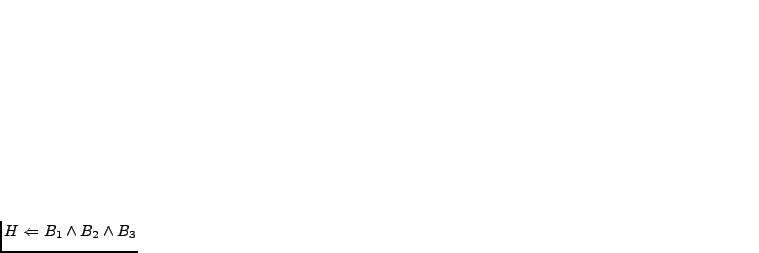 |
(5.1) |
The main idea of logic programming is that deduction can be viewed as a form of computation (Sterling and Shapiro, 1994). The declarative statement
 |
(5.1) |
 , solve
, solve  and
and  and
and  '', or shortly
'', or shortly
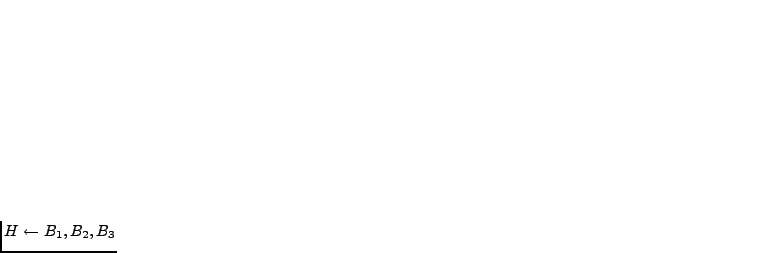 . A logic programme is thus a set of logical axioms
and it is run by querying for a proof of some goal statement. The
closed world assumption (Reiter, 1978) is used, that is, everything
that cannot be proven to be true, is assumed to be false.
. A logic programme is thus a set of logical axioms
and it is run by querying for a proof of some goal statement. The
closed world assumption (Reiter, 1978) is used, that is, everything
that cannot be proven to be true, is assumed to be false.
Normally the statements in a logic programme are restricted to be of the
form
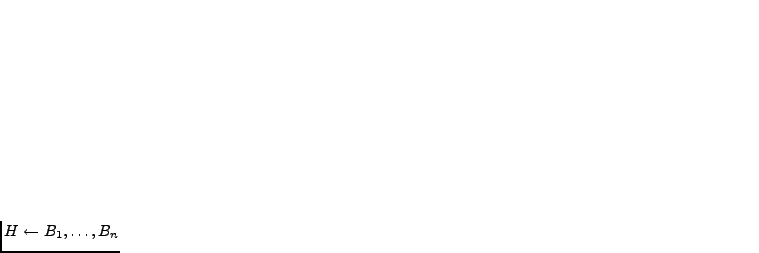 , that is, they are so-called Horn
clauses. This ensures that the proof for the goal statement has a
simple tree structure. Atom
, that is, they are so-called Horn
clauses. This ensures that the proof for the goal statement has a
simple tree structure. Atom  is called the head of the clause and
the atoms
is called the head of the clause and
the atoms
 form the body of the clause. Statements with
form the body of the clause. Statements with  are
called facts because the proof of the head does not require solving
any more statements.
are
called facts because the proof of the head does not require solving
any more statements.
Logic programming uses first-order logic. This means that an atom
can be structured as a predicate followed by a number of arguments in brackets. Some of the arguments can
be variables.5.1An example of a rule (or clause) that uses first-order
logic is
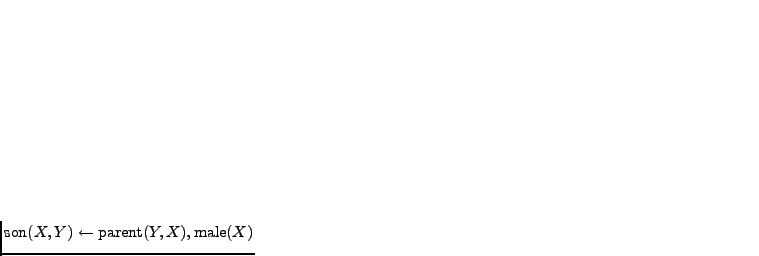 , that is,
, that is,  is the son of
is the son of  if
if  is the parent of
is the parent of  and
and  is male.
is male.  and
and  are logical variables that can represent any object (people in
this case). Variables are written in upper case to avoid confusion.
Atoms that do not contain any variables are called ground.
Completeness theorem by Gödel (1929) states that in
first-order predicate calculus every logically valid formula is
provable. Second-order logic allows variables as predicates,
but completeness does not hold anymore.
are logical variables that can represent any object (people in
this case). Variables are written in upper case to avoid confusion.
Atoms that do not contain any variables are called ground.
Completeness theorem by Gödel (1929) states that in
first-order predicate calculus every logically valid formula is
provable. Second-order logic allows variables as predicates,
but completeness does not hold anymore.
A logic programme that contains the rule
 and some ground
facts such as
and some ground
facts such as
 and
and
 , can answer
a query
, can answer
a query
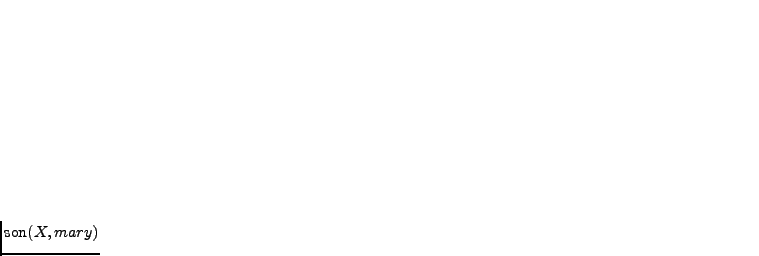 . The solver finds the rule and tries to solve
the body of the rule, that is
. The solver finds the rule and tries to solve
the body of the rule, that is
 and
and
 . The
only solution is
. The
only solution is  which is returned as the output of the programme.
which is returned as the output of the programme.
Prolog is the best-known logic programming language. Sterling and Shapiro (1994) wrote a good book on logic programming and Prolog in specific. Logic programming differs somewhat from traditional procedural programming. The clearest difference is that the values of variables are fixed once set. Where procedural programmes tend to have for-loops, logic programmes use recursion instead. The strong areas of logic programming include handling structured data, symbolic manipulation, and self-changing programmes. In inductive logic programming, rules in logic programmes are learned from examples.